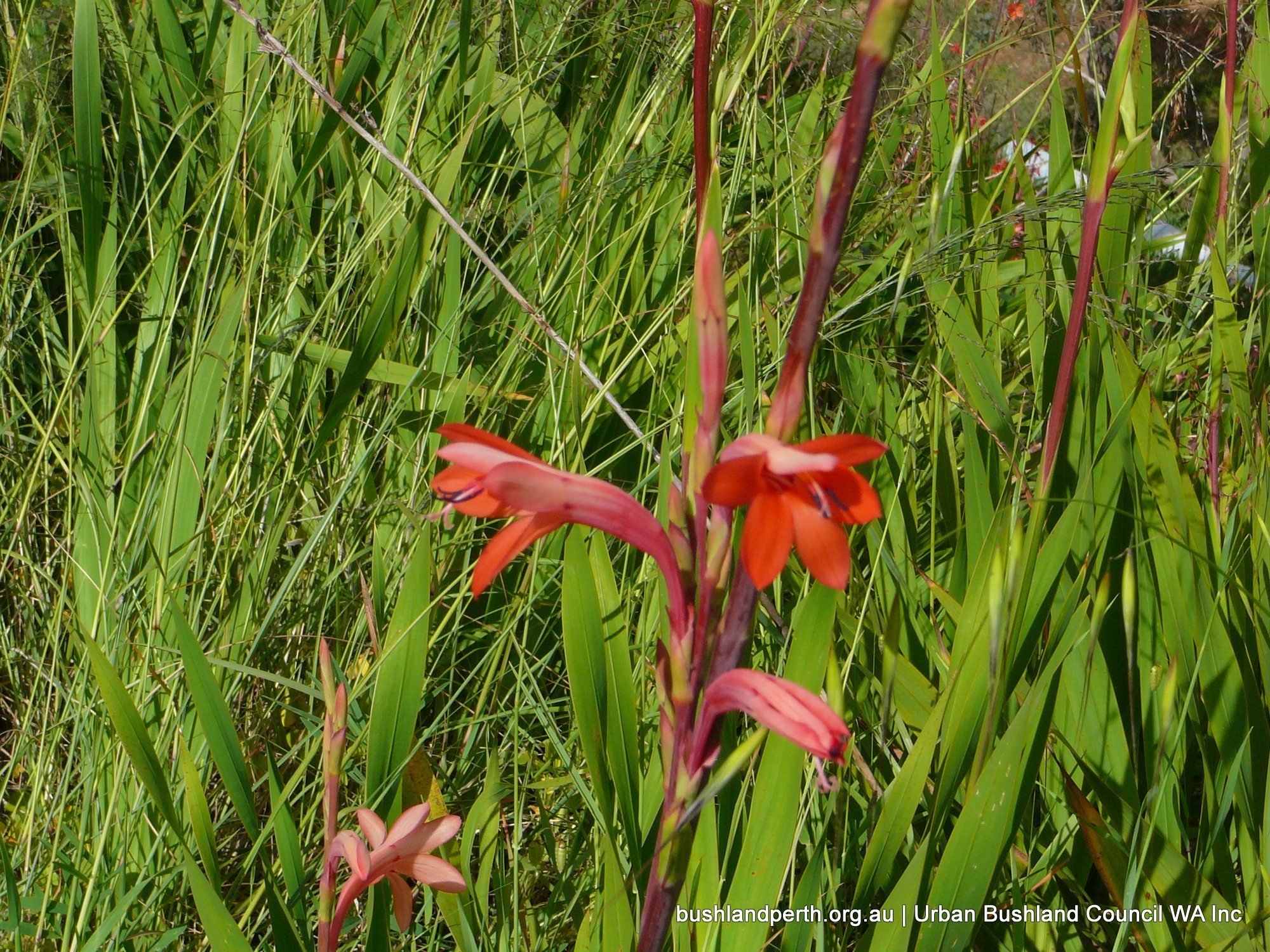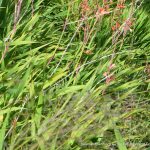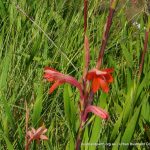Bugle Lily

Common name
Bugle Lily
Scientific Name
Watsonia meriana var. bulbillifera was previously named Watsonia bulbillifera
Type of plant
Bulbs or Corms
About this weed
The Watsonias found in urban bushland are all garden escapees. They were originally natives of southern Africa. All Watsonias in West Australia are declared Pest Plants and therefore subject to the Agriculture and Related Resources Protection Act 1976. These weeds are perennial annuals which regrow from corms and seeds. Each plant forms a clump with stiff, sword shaped leaves and flower stalks can grow to 2.5 m and carries dull orange flowers. This weed spreads efficiently along creeks and waterways and is a very serious weed in wetter areas.
Description
Watsonias are cormous perennials growing to over 2 m in height. Pink, red and orange flowers are produced in spring and summer. The flowers in the lower part of the inflorescence are replaced with clusters of cormils. These weeds will generally survive fire and produce a prolific flowering and seed set following summer fires.
Impact on Bushland
If left will spread in bushland and readily out competes native plant communities.
Location
Watsonias occurs on the Swan Coastal Plain and through various areas in the South-West Province on grey sandy loam and brown gravelly loam, brown sandy clay, pale sandy alluvium and valley slopes, winter-wet areas, along riverbanks & creeklines and in roadside drains.
Priority for removal
High: major threat to the conservation values of Banksia woodlands and South-West Province.
Management (hand)
Wipe individual leaves with Glyphosate 10%. All Watsonias in West Australia are also a declared Pest Plant and there for subject to the Agriculture and Related Resources Protection Act 1976 and has therefore documented control strategies in place.
Management (herbicide)
Spray dense infestations with 2,2-DPA 10 g/L + Pulse. Apply just as flower spikes emerge at corm exhaustion. 2,2-DPA at 5 g/L+ Pulse is also quite effective and is appropriate to use when particularly concerned about off-target damage, for example following fire when Watsonias are growing among germinating native seedlings and resprouting native shrubs. Read the manufacturers’ labels and material safety data sheets before using herbicides. For optimum effect treatment should be done in September. All Watsonias in West Australia are also a declared Pest Plant and there for subject to the Agriculture and Related Resources Protection Act 1976 and has therefore documented control strategies in place.
Flowering month/s
September, October, November
Flower colour/s
Red, Pink, Orange
Information source
https://florabase.dpaw.wa.gov.au/browse/profile/18108
Additional information
https://florabase.dpaw.wa.gov.au/weeds/swanweeds/
Hussey, B.M.J., Keighery, G.J., Dodd, J., Lloyd, S.G. and Cousens, R.D. (2007) Western weeds. A guide to the weeds of Western Australia, Second Edition, The Weeds Society of Western Australia, Victoria Park, Western Australia.
https://www.agric.wa.gov.au/pests-weeds-diseases/weeds/pest-plants


